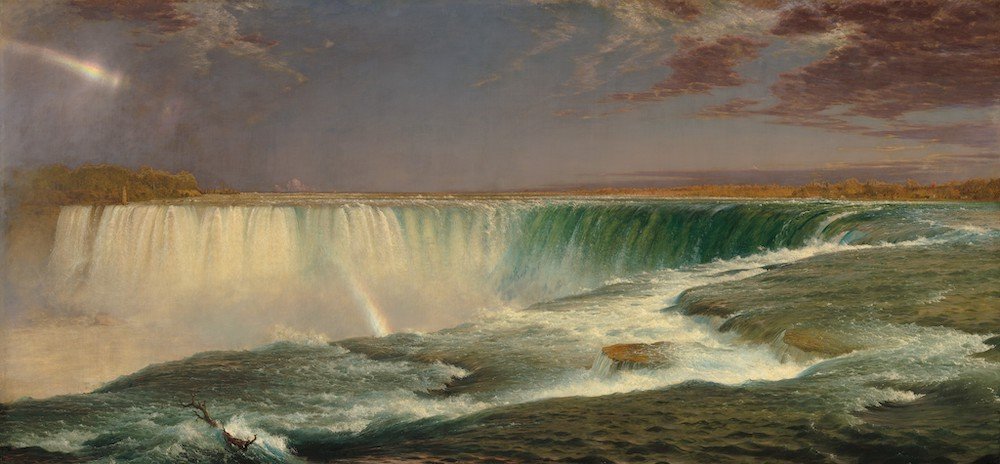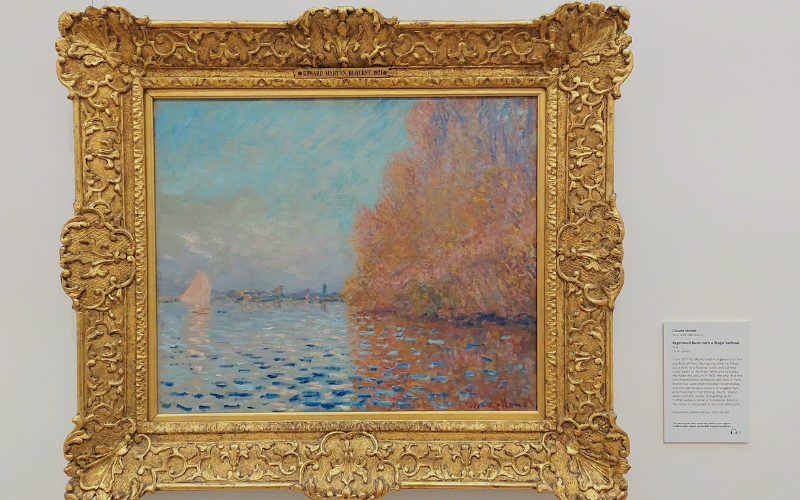Abstraction and Non-Objective are two painting styles that are often discussed in the world of art. Although the terms are often used interchangeably, there are some distinct differences between the two. Almost always, I hear the word “abstract” used for “non-objective” painting. I think most people have never heard the term “non-objective.” I find myself often using the term abstract when I mean non-objective because most people are familiar with the first, but not the second.
What is “Abstract”?
Abstraction refers to a style of painting in which the artist takes elements from reality and simplifies or distorts them to create a new image. The end result is often a work of art that is still recognizable as having roots in reality, but that is not a literal representation of the subject (that would be “representational” artwork).

What is Non-Objective?
On the other hand, non-objective painting is a style in which the artist makes no reference to reality at all. Instead, the painting is created purely from the artist’s imagination and is not meant to depict anything recognizable. Non-objective paintings are often made up of shapes, colors, and forms that are arranged in a harmonious composition, but not meant to depict a certain object.

In terms of the creative process, abstraction often begins with the artist working from a specific subject or object, whereas non-objective painting begins with the artist exploring color, shape, and form without any specific reference to reality.

Marsden Hartley’s Movements, 1913, is Expressionistic instead of Narrative. Art Institute of Chicago.
Viewer’s Experience
When it comes to the viewer’s experience, I find that many people are most comfortable with representational artwork. The feel like they understand it. Somewhere along the path from realism to abstract, we can lose a lot of viewers. The non-objective artwork is often criticized the most. However, I noticed that it is also the work bought by Interior Designers because it can feel sophisticated and have more mass-appeal than, lets say, a painting of a barn.

If a work is abstract, (and therefore still from a realistic subject), people can still connect to the idea that it is about something. When we make a non-objective artwork, viewers may feel like they “don’t get it” and then they feel like they are missing out, or worse, not invited to the conversation. Working in galleries, museums, and at festivals, I feel like I heard all of the defensive comments. And, if you ever hear them, take a second to recognize that that is what they are: defensive. It can be hard as an adult to say, “Hey, yeah, I am TOTALLY ignorant about this. Tell me about it.” If you run into this kind of viewer, and they are still engaging with you, go ahead and just explain what you were up to. “I made this painting because I wanted to play with the interactions of the colors,” or perhaps, “I really enjoyed the movement of the brush in this piece, and I felt that it would be a good way to let someone enjoy the physicality of paint.”
Non-objective paintings are really paintings that are about painting. We are utilizing the elements of art and principles of design so much in them. Creating conversations about choices that were made about texture can happen in a painting about a barn. But, it could be the entire point of non-objective painting.
Overall
Understanding the differences between the two can help painters decide which approach best suits their creative goals and can help viewers appreciate the unique qualities of each style. When we read or write art reviews, we definitely need to know the difference between these terms. However, for everyday communication, you can get away with just using “abstraction.”
Related tip:
Remember that giving someone an ‘in’ to understanding your artwork is important. They may need a bit of help to understand your message. I think of this as the warm introduction. Let’s pretend we pass each other on the sidewalk. Do we know that we are both totally into painting? Or that we have a friend in common? Probably not. But, if that friend introduces us, all the sudden we are striking up a conversation. We are both exactly the same people as in the first situation, we just needed a bit of help. If you aren’t near your artwork, your title is often the first step in this “warm introduction.”


